Popular on Food52
Continue After Advertisement
15 Comments
Saf
May 27, 2013
Hi there, I'm at my wits end, been making macs successfully but my last few batches (read 8-10) are just not working out, they deflate 10 mins before I need to get them out and then they are soggy sort of bendable. I'm due to fill in an order and really need help with what can be wrong. Could it be that I need to change my almond powder to another brand?
Ambitious
April 2, 2013
Thanks for this! I made them about 5 times and only got it right once! :( So frustrating. I have 2 questions:
- What do you recommend for someone like me who doesn't have a food processor?
- After piping the macarons, what do you do with the remaining batter? Or should I just make very little batter each time so that the remaining batter doesn't deflate?
Thank yo!
- What do you recommend for someone like me who doesn't have a food processor?
- After piping the macarons, what do you do with the remaining batter? Or should I just make very little batter each time so that the remaining batter doesn't deflate?
Thank yo!
Christina @.
June 19, 2012
I made macarons for the first time last week after significant research, and they turned out perfectly. I don't know if it was beginner's luck, but we'll see. Much of what I read said that letting them stand to form a skin is unnecessary, (including David Lebovitz) so I popped them in immediately and they were beautiful, feet and all! I only slammed the tray twice, and there was no need to touch up the tops. In essence, they were SO incredibly easy to make, I could hardly believe it!
Helen M.
November 9, 2015
Haha! I had the exact same first time experience, except I was using reduced aquafaba instead of egg-white. I am terrified to make them again because I am sure it was a matter of planetary alignment rather than skill...
AntoniaJames
May 31, 2012
Excellent post, full of so much useful information. Good luck with your business, Dana! I am certain you'll be wildly successful. ;o)
The F.
May 31, 2012
Making French macarons has been on my hit list for quite some time now. In fact, I was so enthusiastic about making them this past holiday season that I received Kathryn Gordon's Les Petits Macarons: Colorful French Confections to Make at Home before Christmas! These delicate sweet perfections are one of my favorite, thank you for providing some additional information! BRAVO!
fiveandspice
May 31, 2012
Great tips! Question for all the macarons experts out there - almonds are one of a couple types of nuts I can't eat, and I've been wondering for a while, can you make macarons with any other type of nut flour? Or will it just not do?
jbban
May 31, 2012
Check out Bravetart's guide: http://bravetart.com/recipes/Macarons
Her method is very relaxed and she says you can make macarons with any type of nut.
Her method is very relaxed and she says you can make macarons with any type of nut.
Kitchen B.
May 31, 2012
And it is MacarOn....not MacarOOn - a single o: two very different cookies - SORRY! and National Macaron day was weeks ago - well, there could be several celebrated days in honour of very gorgeous but I must confess, fickle cookies! See http://www.kitchenbutterfly.com/2012/03/20/reasons-to-believe-happy-macaron-day/.
MotherWouldKnow
May 31, 2012
I agree with LauriePf - prefer to bit more puff to the macarons, and I would be loathe to prop oven open in the summer. But otherwise, the tips look great, and I'll use them next time I try macarons.
LauriePf
May 31, 2012
These macarons are very uniform, but a little flat. Macarons should have a bit of puff to them (roundness across the tops). Slamming them 6 times is a bit much. Once will give you a little settling without deflating. Would also recommend not using water as that can cause flattening.
Kitchen B.
May 31, 2012
Thanks for sharing - I'm going to give macs another go, especially with the cream of tartar addition which is new for me.
On filling and eating the macarons, most purists recommend filling the shells and leaving them for a few hours or overnight for the filling to set - this changes the texture completely......The filling fuses with the shells and you end up with slightly crisp outers and creamy centres.
On filling and eating the macarons, most purists recommend filling the shells and leaving them for a few hours or overnight for the filling to set - this changes the texture completely......The filling fuses with the shells and you end up with slightly crisp outers and creamy centres.
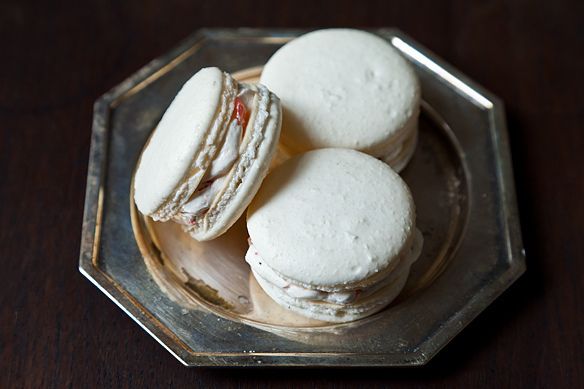
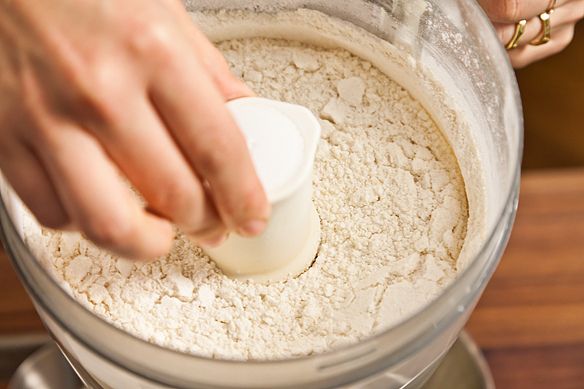
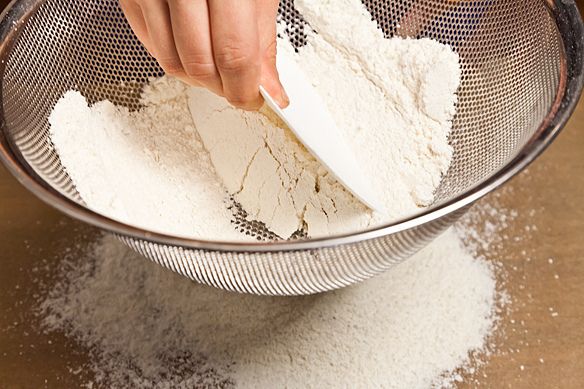

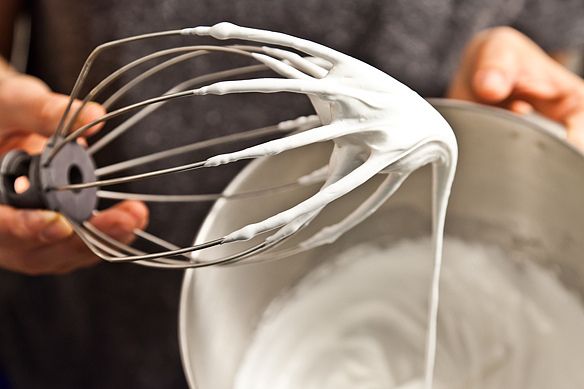
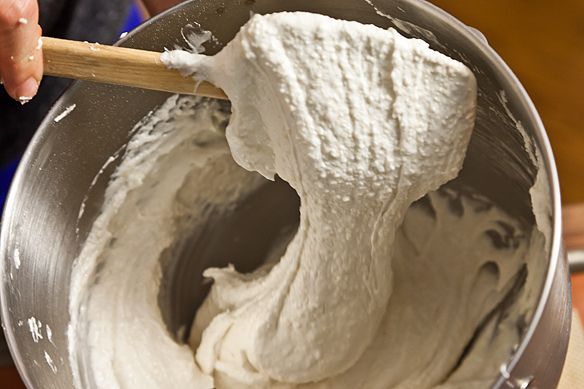
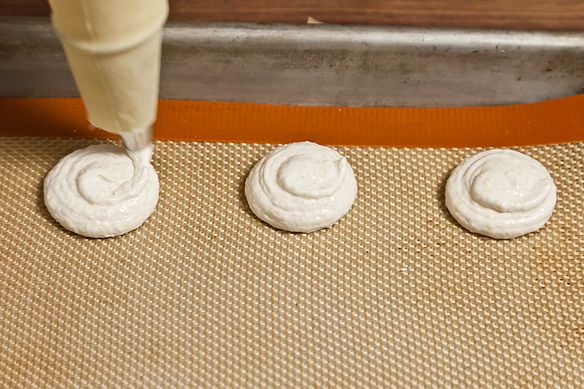
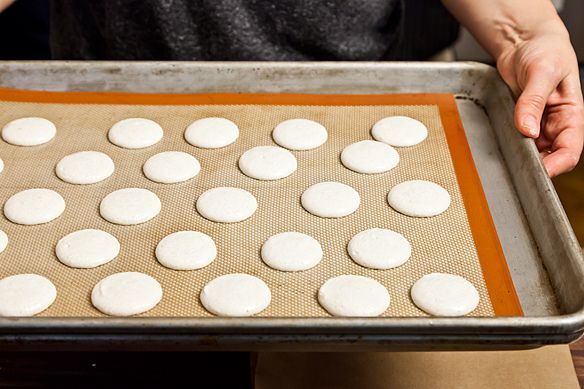
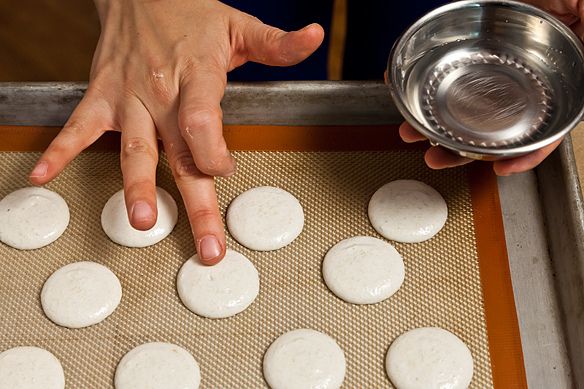

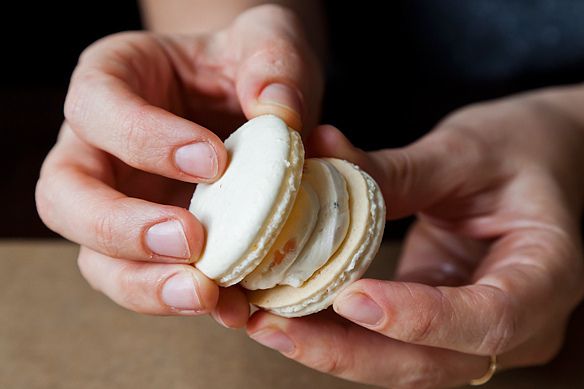
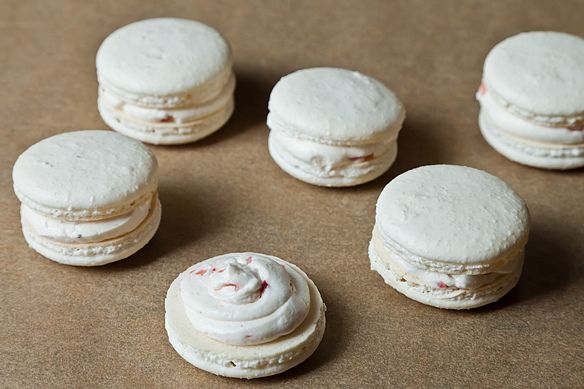

See what other Food52 readers are saying.